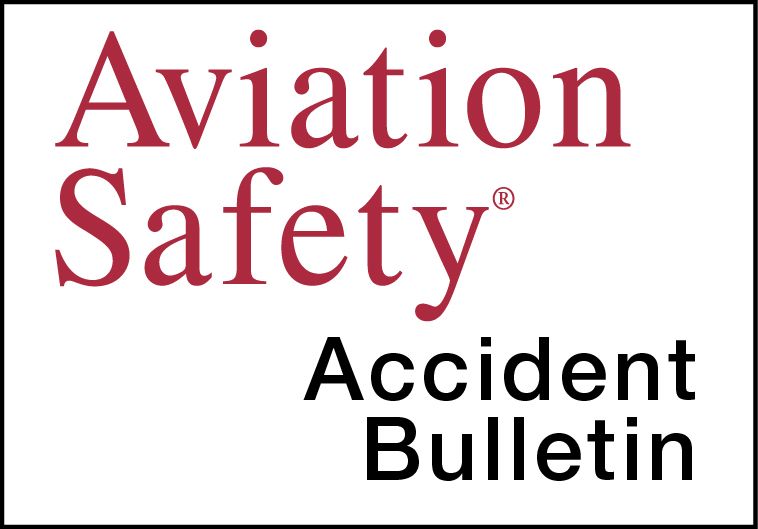AVweb’s General Aviation Accident Bulletin is taken from the pages of our sister publication, Aviation Safety magazine. All the reports listed here are preliminary and include only initial factual findings about crashes. You can learn more about the final probable cause on the NTSB’s website at www.ntsb.gov. Final reports appear about a year after the accident, although some take longer. Find out more about Aviation Safety at www.aviationsafetymagazine.com.
June 10, 2022, Camarillo, Calif.
Mooney M20K 231
At about 0803 Pacific time, the airplane was destroyed when it collided with a building and terrain shortly after takeoff. The solo pilot was fatally injured. Instrument conditions prevailed; the flight operated on an IFR flight plan.
The pilot contacted Flight Service at about 0730, requested an abbreviated weather briefing and subsequently filed an IFR flight plan to climb through the marine layer. Local weather included an overcast at 300 feet, calm winds and visibility of four miles in mist. At 0749, the pilot requested his IFR clearance. Before takeoff, the pilot exhibited some difficulty with the clearance and taxi instructions. At 0801, the pilot was cleared for takeoff but never contacted the departure controller. Multiple witnesses driving along a freeway parallel to the departure runway and about ½ mile north reported seeing an airplane flying low and at high speed.
The first point of impact was at the top wall of a building located south of the freeway and a mile west-northwest of the departure end of Runway 26. The outboard section of the right wing and aileron were on the building’s flat roof. A trail of debris consisting of wing skin fragments and the right flap continued on a heading of 035 degrees, across the freeway, to a second impact point in a strawberry field, 750 feet beyond. The main wreckage was another 250 feet or so downrange.
June 11, 2022, Stockbridge, GA
Piper PA-23 Apache
The airplane was substantially damaged at about 1207 Eastern time when it collided with terrain after the right engine failed shortly after takeoff. The pilot and pilot-rated passenger were seriously injured. Visual conditions prevailed.
The pilot had just purchased the airplane, and he and the previous owner were relocating it to an avionics shop. After a satisfactory run-up, the pilot held the brakes and applied full power. He stated both engines “were within the green and producing power.” After takeoff, the airplane began shaking and yawing right, and the pilot believed that the right engine had lost power. He applied left rudder and noted airspeed was below the airplane’s best single-engine climb speed, so he lowered the nose. The pilot then told the pilot-rated passenger to take the controls, while he feathered the right engine propeller, which he recalled came to a complete stop. By then, the airplane had slowed to near its minimum-controllable speed, but he had no altitude to trade for airspeed. The airplane impacted a line of trees it couldn’t climb over.
June 16, 2022, Weslaco, Texas
Meyers 200A
At about 0830 Central time, the airplane was substantially damaged when it descended to terrain after the engine lost all power shortly after takeoff. The pilot was not injured. Visual conditions prevailed.
After takeoff, the pilot joined the left traffic pattern to overfly the runway before departing the area. While on the downwind leg, the engine experienced a total loss of power and the propeller windmilled. As he turned toward the airport, he estimated he had the runway made, so he extended the landing gear. However, the “landing gear provided too much drag and he was unable to make the runway,” according to the NTSB, and the airplane descended into trees. The airplane collided with the trees and came to rest vertically with the tail resting in a tree. Witnesses converged on the accident site and assisted the pilot in egressing from the airplane.
June 16, 2022, Madison, Miss.
Bellanca 17-30A Super Viking
The airplane was substantially damaged after an in-flight fire ignited shortly after takeoff and the pilot landed back at the departure airport. The pilot and passenger were not injured. Visual conditions prevailed.
After takeoff, the pilot noticed smoke in the cabin and returned for landing. While taxiing, the smoke worsened and the pilot stopped and shut down the engine. After egressing, the pilot and passenger observed a fire on the engine compartment’s starboard side. Before the fire could be extinguished, it burned most of the cockpit area. Initial examination revealed the right exhaust system was fractured between the muffler and tailpipe.
June 16, 2022, Davis, Calif.
Cessna TR182 Turbo Skylane RG
At about 1128 Pacific time, the airplane was destroyed when it caught fire shortly after takeoff and was landed off-airport. The pilot sustained minor injuries. Visual conditions prevailed.
The pilot observed smoke coming from the instrument panel shortly after takeoff. As the airplane climbed through 200 feet AGL, he observed flames in the area near the pilot’s rudder pedals and noted a partial loss of engine power. The pilot initiated an off-airport landing to a nearby tomato field. During the landing rollout, the airplane nosed over and came to rest inverted. The fire subsequently destroyed the airplane.
June 16, 2022, Austin, Texas
Cessna T206H Turbo Stationair
The airplane was substantially damaged when it was intentionally ditched in a lake after the pilot experienced smoke in the cockpit and loss of engine power. The pilot was seriously injured. Visual conditions prevailed.
The accident flight was the first one following maintenance. Shortly after takeoff, the pilot reported the smoke and loss of engine power to ATC. Following the loss of engine power, the pilot ditched the airplane into Lady Bird Lake, near the departure airport. The airplane was recovered and retained.
This article originally appeared in the September 2022 issue of Aviation Safety magazine.
For more great content like this, subscribe to Aviation Safety!



































